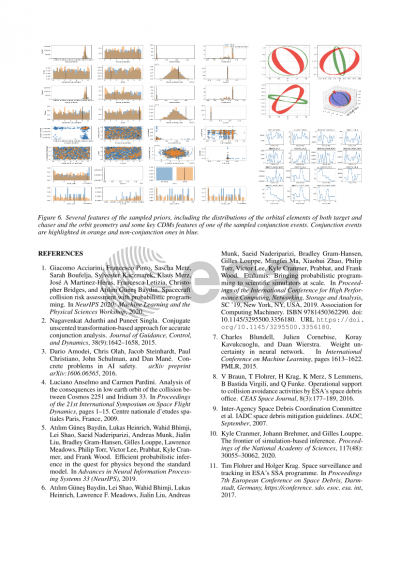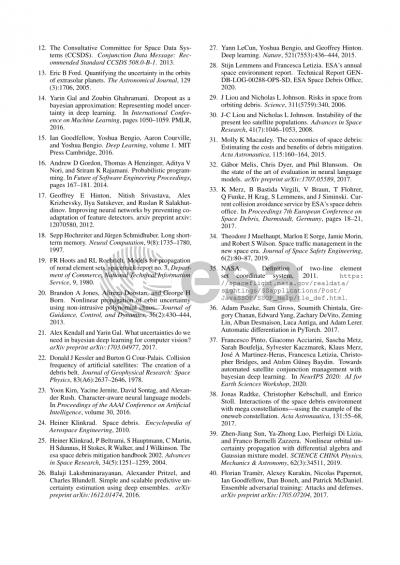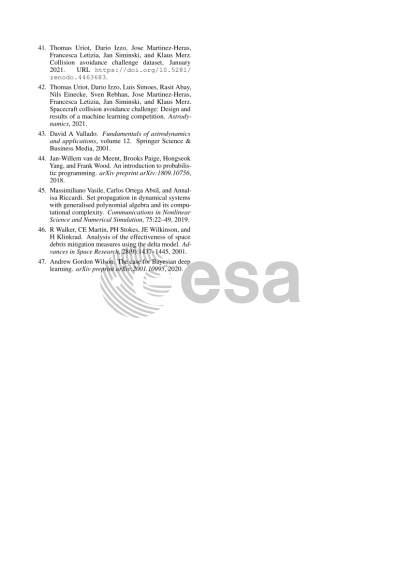Document details

Abstract
As megaconstellations are being launched and the space sector grows, the space environment is increasingly polluted with space debris, and this poses a threat to operational spacecraft. Even a 10 cm piece of debris could severely damage an operational spacecraft and further generate more junk. Currently, the low-Earth orbit is a junkyard of dead satellites, rocket bodies, shrapnels of payloads, and other debris that travel at very high speed in an uncontrolled manner. A single collision among space objects could generate a cloud of debris and eventually trigger a domino effect that would endanger the whole population: something known since the late 1970s as the Kessler syndrome.
In this work, we present Kessler: an open-source Python package for machine learning applied to collision avoidance. It provides functionalities to parse conjunction data messages (CDMs) in their original format, make predictions, and analyse conjunction events based on explainable machine learning models. Kessler implements both Bayesian deep learning (using Pytorch, a standard machine learning framework) and Bayesian simulation-based inference (using PyProb, a universal probabilistic programming framework based on Pytorch).
The package currently provides an implementation of a Bayesian recurrent neural network (specifically a Long Short-Term Memory, LSTM) that can predict, conditioned on the CDMs received up to now in a conjunction event, the contents of future CDMs together with uncertainties about the predicted values. The features being regressed include the covariances and the predicted states of the target and chaser, the time of closest approach, and the time of arrival. The model can be trained from scratch with any existing collection of CDM files and used to make predictions at test time. Kessler provides convenient data loading and visualization functionalities, and it can be extended to support other (Bayesian) deep learning models and training procedures.
Furthermore, the library includes a novel probabilistic generative model of conjunction events and CDM sequences, implemented using probabilistic programming. The model is calibrated with real data that allows sampling CDM sequences emulating the CDM generation process of the Combined Space Operations Center (CSpOC). The orbital propagation is performed using a low-precision propagator (i.e., SGP4) and the uncertainties are propagated at time of closest approach using Monte Carlo sampling. The model can be used for Bayesian model-based inference with off-the-shelf probabilistic programming inference engines, conditioning the model on observations (i.e., real CDMs) to obtain posterior distributions over latent variables that explain the observed data. This approach can be used to interpret the key orbital parameters of the considered pair of objects that could have produced the observed conjunction events.
Additionally, the calibrated model enables the generation of large datasets of realistic synthetic CDMs that we believe will be pivotal to develop data-intensive machine learning techniques and to attract machine learning researchers to this application domain. The provided model can be extended (e.g., including different uncertainty propagation techniques or higher-fidelity propagation methods) to represent more computationally efficient and/or accurate physical models of the setting.
Preview










